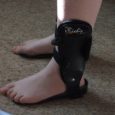Hospitals are places where people go to get well. They are also places where many people come into contact with others who may be carrying germs and viruses. To help protect patients and staff, hospitals need to have a system in place for keeping the environment clean and free of contaminants. This includes using Personal Protective Equipment (PPE) in appropriate areas throughout the hospital. Many different types of PPE can be used in a hospital setting, depending on the facility’s specific needs. In this article, we will discuss the different types of PPE that can be used in a healthcare setting, and explain why they are essential in helping to keep patients and staff safe.

Gloves
Gloves are an essential form of PPE used in hospitals and other healthcare settings. As explained by the creators of Only Nitrile Gloves, they are designed to protect medical personnel from coming into contact with bodily fluids or other hazardous materials that may be present in the environment. Medical gloves come in a variety of materials, including latex, vinyl, and nitrile. Each material has its advantages and disadvantages depending on the situation. For instance, latex gloves provide good protection against bacteria but can cause skin irritation. Vinyl gloves are more comfortable to wear but less effective against pathogens than latex and nitrile gloves. It is important to note that gloves should always be disposed of immediately after use, as they can harbor bacteria and viruses even after being washed.
Masks
Masks are one of the most common pieces of PPE used in healthcare settings. They come in all shapes and sizes and are often made from disposable materials such as paper or cloth. However, the most common type of mask used in healthcare is the surgical mask. These masks are designed to provide a barrier against large particles and droplets that may be carrying pathogens or other contaminants. Depending on the specific environment within a hospital, masks may be required for both patients and staff alike. This is especially true when there is a risk of spreading airborne diseases or infections. In less intensive care situations, masks may be required for visitors as well.
Gowns
Gowns are another form of PPE commonly used in healthcare settings. Gowns come in long-sleeved, short-sleeved, disposable, and reusable varieties, depending on the situation. They are used to protect medical staff from coming into contact with bodily fluids or other contaminants that may be present in the environment. Long-sleeved gowns provide greater protection than short-sleeved gowns but may be less comfortable for staff to wear. Gowns are typically worn in areas where it is necessary to keep the environment sterile and free from contaminants. For instance, you will often see nurses and other medical staff wearing gowns in operating rooms, ICUs, and other areas where infection control is a priority.
Goggles/Face Shields
Goggles and face shields provide an extra layer of protection from any airborne particles or droplets that may be present in a healthcare setting. These types of PPE are especially important for medical personnel who work directly with patients, as they can help protect their eyes and faces from contamination. While goggles provide a barrier against airborne particles and droplets, face shields provide even more protection as they cover the entire face. Face shields are typically used when there is a high risk of infection present, such as during procedures that involve spraying liquid or other biological material.

While there are many other types of PPE available in the healthcare setting, these four types of gear—masks, gowns, gloves, and goggles/face shields—are essential for protecting medical professionals, visitors, and patients from infection. By taking the necessary precautions, medical personnel can help protect themselves and others from coming into contact with harmful pathogens or other contaminants.




